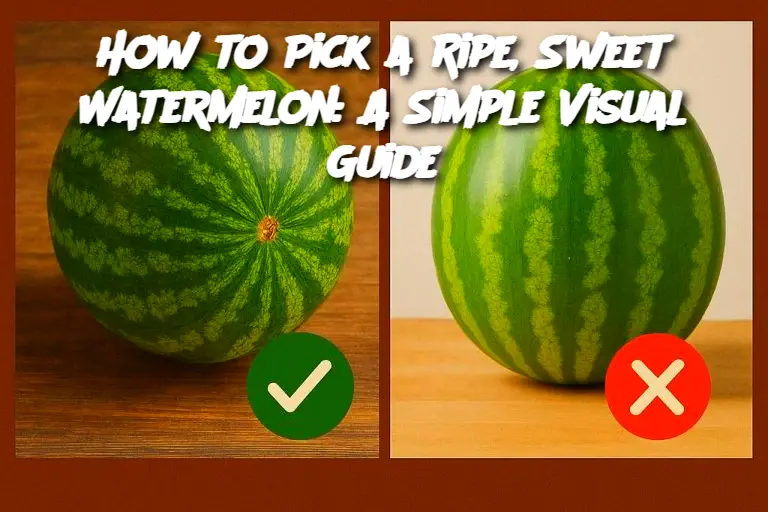ADVERTISEMENT
Introduction:
There's nothing quite like biting into a juicy, sweet watermelon on a hot day—but choosing the right one can be tricky. While cutting one open is the only sure way to know, you can significantly improve your odds by learning to read the signs of ripeness on the outside. Here’s a foolproof visual guide to help you select the best watermelon at the market.
Ingredients:
(Not applicable for selection guide, but if part of a larger recipe you may include: 1 ripe watermelon)
Preparation:
Here are the key features to look for when picking a ripe watermelon:
Look for the Field Spot:
This creamy, yellow patch is where the watermelon rested on the ground. A deep yellow or orange field spot indicates ripeness. If it’s white or absent, the fruit was likely picked too early.
Check for Webbing:
Brown, vein-like webbing or sugar spots show where bees pollinated the flower. More webbing can mean a sweeter melon.
Pick it Up:
A ripe watermelon should feel heavy for its size—this indicates it's full of water and juice.
Tap the Belly:
Tap or knock on the watermelon. A deep, hollow sound usually means it’s ripe. A dull sound might indicate it’s underripe or overripe.
Uniform Shape:
Choose a watermelon that is symmetrical—whether round or oval. Irregular bumps or lumps could mean inconsistent growth or water content.
Look for a Dull Skin:
Shiny skin might be a sign that the melon is underripe. Ripe watermelons tend to have a matte finish.
Examine the Tail:
If the watermelon has a tail (stem), a dry, curly one is a good sign it was left to ripen on the vine. A green tail may suggest it was picked too soon.
Serving and Storage Tips:
Once cut, watermelon should be stored in an airtight container in the refrigerator and consumed within 3–5 days for the best texture and flavor. Whole watermelons can be stored at room temperature for up to 7–10 days.
Variant:
ADVERTISEMENT
